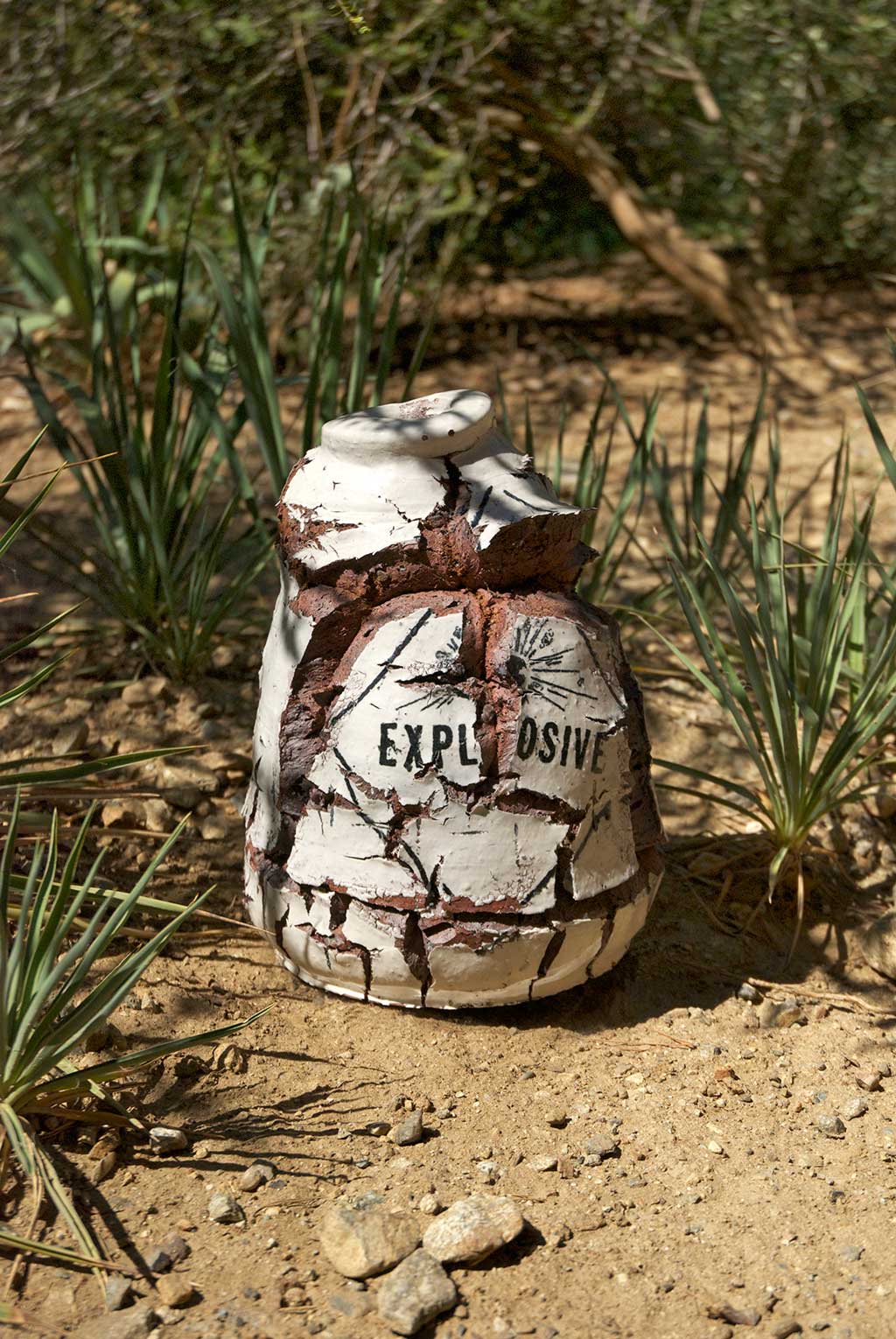loading...
Clayton Bailey
Clayton Bailey (March 9, 1939 – June 6, 2020) was a ceramic and metal sculptor who created eccentric and humorous sculptures depicting humans, robots, and other whimsical characters. He was known for a large range of works including jug head pots with exaggerated facial expressions, cyclops skulls, shiny robots, and other multimedia works. Additionally, he was a member of the West Coast Funk art, an anti-establishment movement that pushed for the revival of the figure in art.
Born in Antigo, WI, Bailey attended the University of Wisconsin-Madison where he received his B.S. in Art Education (1961) and M.S. in Art and Art Education (1962). During his studies, Bailey experienced success with being a cartoonist for the campus magazine, which convinced him to pursue studying art. He attended ceramic classes where he met and studied under Harvey Littleton who introduced him to folk pottery and the avant garde. He additionally took workshops with Bernard Leach, Peter Voulkos, and studied with Toshiko Takaezu (summer 1959) and Clyde Burt (summer 1960). Bailey’s work consisted of handbuilt sculptures and wheel thrown stoneware, and multimedia works consisting of various materials including clay, metal, and wood.
Bailey began teaching at the University of Iowa (summer 1963) and later taught at Wisconsin State University-Whitewater (1963-1967). He then taught at the University of South Dakota where he and Francis Coelho established a new art department until his move to California where he opened a studio and began teaching at California State University-Hayward (now California State University-East Bay) and remained there until his retirement in 1996.
Bailey was the recipient of the National Endowment for the Arts Grant Recipient (1990), the “Golden Bear Artist of the Year” by the California Arts Council (2009), and a Fellow of the National Council on Education in Ceramic Arts (1982). Bailey’s work can be found in a multitude of collections including the Racine Art Museum, WI, the Renwick Gallery, Smithsonian Museum, Washington, DC, the Mackenzie Art Museum, Canada, and the Asahi Shimbun, Japan. After his death, his collection was acquired by the Akron, Ohio, nonprofit arts organization, Curated Storefront. The organization created Clayton Bailey’s World of Wonders Museum.
